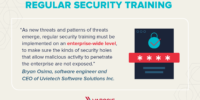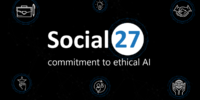Embarking on the vast landscape of Information Technology (IT) comes with its set of challenges, and managing IT risks is a crucial aspect of maintaining a robust and secure environment. Building a solid IT risk management roadmap ensures that your organization is prepared to navigate potential pitfalls and uncertainties. Let’s explore some quick tips to steer your IT risk management in the right direction! ️
The Importance of IT Risk Management
Before we dive into the tips, it’s essential to recognize why IT risk management is more than a box to check. In today’s technology-driven world, organizations face a myriad of potential threats – from cyber-attacks to system failures. Proactive risk management is the key to safeguarding valuable assets and maintaining operational resilience.
Quick Tips for Effective IT Risk Management
- Identify and Assess Risks: Begin by conducting a thorough risk assessment. Identify potential risks that could impact your IT infrastructure, including cybersecurity threats, data breaches, and system vulnerabilities. Assess the potential impact and likelihood of each risk to prioritize mitigation efforts.
- Implement Robust Security Measures: Bolster your defenses by implementing robust cybersecurity measures. This includes regular software updates, intrusion detection systems, firewalls, and secure access controls. Proactively addressing security vulnerabilities is a cornerstone of effective IT risk management.
- Develop Contingency Plans: Prepare for the unexpected by developing comprehensive contingency plans. Outline clear steps to be taken in the event of a security incident, system outage, or data breach. Having a well-defined plan in place ensures a swift and organized response to mitigate the impact of unforeseen events.
- Regular Training and Awareness: Invest in ongoing training and awareness programs for your IT team and end-users. Educate them about the latest cybersecurity threats, phishing tactics, and best practices for maintaining a secure IT environment. Human error is a common factor in IT risks, and informed individuals are your first line of defense.
- Continuous Monitoring and Improvement: Establish a continuous monitoring system to track changes in your IT environment and detect potential risks in real-time. Regularly review and update your risk management strategies based on emerging threats and industry best practices. Adaptability is key in the ever-evolving landscape of IT risks.
Challenges in IT Risk Management
While the benefits of effective IT risk management are clear, challenges persist. Balancing the need for robust security with user convenience, staying ahead of evolving cybersecurity threats, and ensuring compliance with industry regulations are ongoing challenges faced by organizations in their IT risk management efforts.
The Future of IT Risk Management
The future of IT risk management will likely see advancements in artificial intelligence for threat detection, increased integration of automation in response mechanisms, and a growing emphasis on collaborative efforts to address global cyber threats. Staying informed about emerging technologies and threat landscapes will be crucial for staying ahead of potential risks.
Conclusion
Creating a resilient IT infrastructure requires more than just advanced technology – it demands a strategic and proactive approach to risk management. By identifying and assessing risks, implementing robust security measures, developing contingency plans, fostering a culture of awareness, and embracing continuous improvement, you can navigate the intricate terrain of IT risks with confidence. Build your IT risk management roadmap wisely, and let it be the guiding force that ensures the security and stability of your digital journey!








